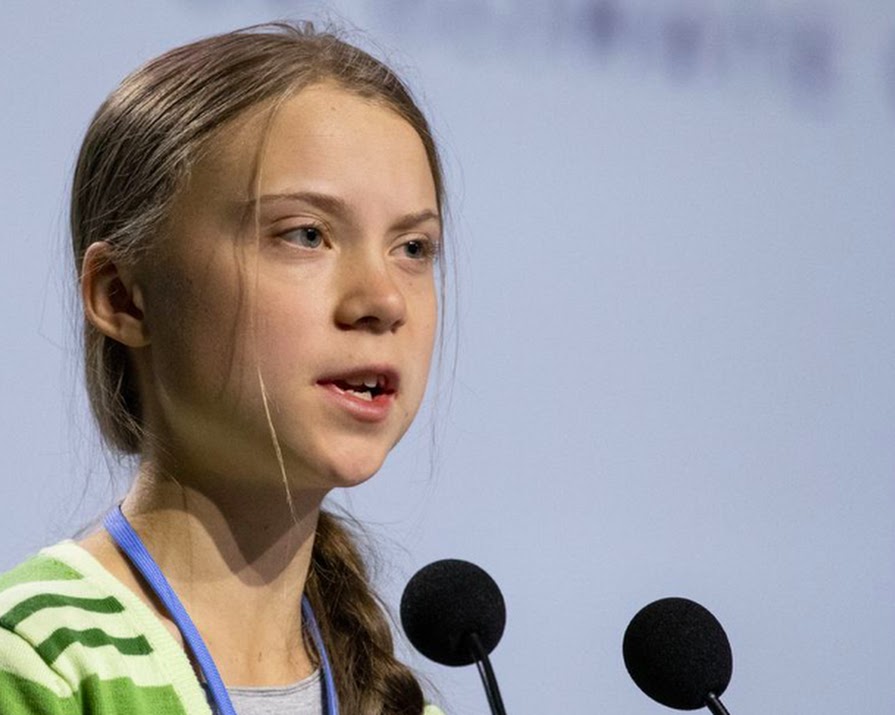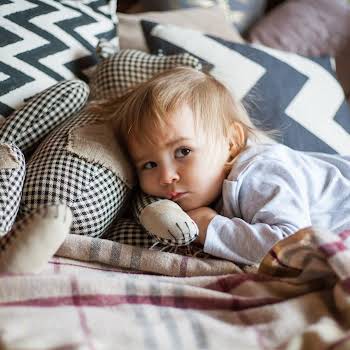
‘The tantrum that could save the world’: The right way to discuss climate change with your children
By Amanda Cassidy
13th Dec 2019
13th Dec 2019
When are children ready to hear about an abstract, global problem that may affect their future in a very tangible way? And what exactly do we want them to learn, asks Amanda Cassidy
After exhausting most of the cartoons on Netflix, I was delighted when my 8-year-old daughter wanted to watch Blue Planet 2. I considered it a parenting victory – my child liked exploration, ecology and David Attenborough’s voice.
But it got pretty real, fast.
She knew about the food chain but seeing it up close was new. But she seemed delighted to understand the world a little better. But when we got to the episode about the plastic in the dolphin’s tummy and the coral reefs dying because of the warming of the sea, she had a lot of questions. And they related to her future.
“We shouldn’t underestimate the power of their unjaded motivation.”
Future generations will probably have to deal with the consequences of a severely disrupted climate. My daughter hears the words ‘global warming’ and ‘climate change’ from all around. What do you think it is, I ask her. A kind of pollution that we need to fix.
In school she learns about some of the worrying aspects of climate change – ice-caps melting, polar bears having no home – but we learnt about that in school too. Maybe we need a different approach – one that allows our children to understand that we have more of a part to play than simply reading about it in books or watching it unfold on Netflix.
Related: Watch Greta Thunberg talk to world leaders about climate change
And we shouldn’t underestimate the power of their unjaded motivation. Greta Thunberg is the 16-year-old teen from Stockholm leading the new climate change revolution. She’s a household name — a tiny scrap of a thing who has spoken at the UN, the EU and the World Economic Forum, and who this week has been hailed as the Time Magazine Person of the Year.
She has always been adamant about her goal — she wants the adults in the room to panic about climate change. But while we are fretting about upsetting our children about the scary world, we’ve forgotten that they are the key to this whole thing. We just have to steer them in the right direction.
‘OMG, they are using plastic straws!’ my four-year-old diva cries as we sit in the airport en route to our holidays. She shames the restaurant nicely, loudly. She knows there is a better way because I’ve told her that. On holidays, we are lucky enough to see the coral reefs up close. We take part in a conservation project to propagate coral – to encourage growth. These are tangible things – the straws, the project, the 3D version of climate action.
This weekend we will be collecting litter in our neighbourhood. I tut when we pass the plastic-covered apples at the supermarket. We wash our recycling and walk instead of drive as much as we can. It is a drop in the warming ocean, but small steps and all that.
Climate reality
“We have to know what we are saving — to understand that it is worth fighting for”
Our children are learning that the world can bite back – they see friends being mean or grandparents getting sick. They know a little about war and famine — climate change shouldn’t be just another bad thing that happens. We, they, have power over the outcome. I want them to know that.
The Climate Reality Project is a non-profit group founded by Al Gore. They advise parents to help children develop an appreciation of the natural world before trying to explain climate change. “We have to know what we are saving”, they say, “to understand that it is worth fighting for.”
The tantrum
Michael Mann is the author of the children’s book The Tantrum that Saved the World. It was written to give young readers a better understanding of climate change. He believes parents mistakingly think it is too difficult a concept for children to grasp. He says often it is the children that are explaining the concept back to parents. “We say to children ‘greenhouse gases warm the planet, we are increasing the levels of greenhouse gases through fossil fuel burning, and that this is having a harmful effect on us and other living things.’ They get it. They want to know what they can do about it.”
Child psychologist Theodora Abes says it is important to keep in mind your child’s personality when approaching the subject. “Some are curious and have heard things they want to be explained. Others may not ask questions but are thinking about it. If you have a child who is prone to anxiety, keep that in mind when you talk about climate change. Have some good facts and details to hand and make sure it is age-appropriate”.
The helpers
But won’t some of the information scare them? Dr Abes says to put the emphasis on what we can do. “It is like the advice when something bad is happening on the news – that you look for the helpers. When you talk to your child you make sure you can identify the positive things that people are doing to help things get better. Make sure you explain that we are all working to make sure we can solve the problem together.”
“We need empowerment, not fear”
Sometimes for children, it is easier to show than tell. Bringing them to a garden centre to show them how the sun’s rays get hotter when they are trapped through a greenhouse, for example, can help explain it better. Shorten showers; don’t automatically turn on the heat; unplug things you don’t need. If we all do a little, a lot can change.
Our children will live the consequences of what we do or don’t do in our lives about protecting our environment. We saw up close the devastation of the coral bleaching during our recent trip.
The children weren’t scared or frightened – they were angry and wanted to do something about it. We need empowerment, not fear. There is no harm in letting our children know that they are part of the solution. Harnessing their tantrum about the environment is the most powerful energy we need for change.
Here is more information on climate change.
Image via: COP25, Madrid
Read more: UN report says climate change worse than we thought.
Read more: Your 8-week plan to sustainability
Read more: 10 things we learnt from visiting a recycling centre























